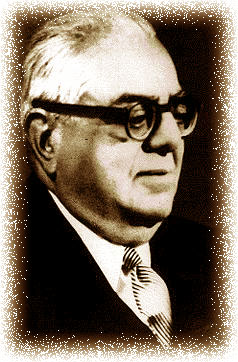아가 칸
Aga Khan
|
아가 칸(Aga Khan)
[파키스탄의
역사]
아가칸은 아주 역사의 한페이지를 장식할 정도로 유명한 집안에서 태어났다. 인도에서 아가 칸 가문의 역사는 1842년부터 시작되었다. 그의 할아버지 아가 핫산 알리샤(Aga Hassan Alyshah)는 칸다르(Khandar)에서 그를 따르는 추종자들과 함께 정치적인 망명으로 이주하여 봄베이에 정착하였다. 그는 1895년에 사망하면서 장자였던 알리샤 아가 칸 2세(Alyshah Aga Khan II)에게 승계하였다. 알리샤 2세는 다시 그의 아들 술탄 모함마드 샤(Sultan Mohammed Shah)가 7살일 때 아가 칸 3세라는 이름을 승계하였다. 아가 칸 3세는 두가지 전통에서 교육을 받아서 철학, 신학, 그리고 페르시아 시에 특출하였다. 1902년 델리에서 열린 모함마단 교육 협회(Mohammadan Educational Conference)에서 의장으로서의 연설에서 그는 알리가(Aligarh)에 무슬림대학을 세울 것을 촉구하였다. 1906년 아가 칸 경은 시믈라 대표단(Simla Deputation)을 이끌었으며 훌륭하게 무슬림의 분리선거 요청를 대변하였다. 후에 그것이 1909년의 몰레이-민토 개혁(Morley-Minto Reform)에 반영되었다. 전인도무슬림연맹(All India Muslim League)가 1906년에 창설되었을 때 아가 칸은 그 첫번째 당수로 선출되었고 1912년 퇴임할 때 까지 이 직위를 지켰다. 1929년 1월 아가 칸을 의장으로 해서 델리에서 있었던 전무슬림대회(All-Parties Muslim Conference)는 무슬림연맹내에 갈라져 있던 두 개의 분파, 즉 샤피그룹 (Shafi Group)과 지나그룹(Jinnah Group)의 연합하도록 하는데 기여했다. 그의 의장으로서의 연설에서 아가 칸은 무슬림 리더들에게 그들의 차이는 뭍어 두고 손을 잡아야 한다고 권면하였다. 1930년-1932년에 런던에서 열린 원탁회의에서 그는 탁월한 협상가이자 선견지명이 있는 대변인으로서 중요한 역할을 수행하였다. 1932년 아가 칸은 The League of Nation에서 인도를 대표하도록 지명되었고 1937년에 만장일치로 League의 당수로서 선출되었다. 그는 1957년 제네바에서 80세의 나이로 사망하였다. [reference] Aga Khan I born 1800
He was the governor of the Iranian province of Kerman and was high in the favour of Fath 'Ali Shah. The title Aga Khan (chief commander) was granted him in 1818 by the shah of Iran. Under Mohammad Shah, however, he felt his family honour slighted and rose in revolt in 1838 but was defeated and fled to India. He helped the British in the first Anglo-Afghan War (1839?42) and in the conquest of Sindh (1842?43) and was granted a pension. After he had settled in Bombay, he encountered some opposition from a minority of his followers, who contested the extent of his spiritual authority and in a lawsuit challenged his control over the community's funds, but he won his case (1866).
Aga Khan II died August 1885, Poona, India
Aga Khan III personal name Sultan Sir Mohammed Shah born Nov. 2, 1877, Karachi,
India [now in Pakistan] only son of the Aga Khan II. He succeeded his father as imam of the Nizari Isma'ilite sect in 1885. Under the care of his mother, a daughter of the ruling house of Iran, he was given an education not only Islamic and Oriental but also Western. In addition to attending diligently to the affairs of his own community, he rapidly acquired a leading position among India's Muslims as a whole. In 1906 he headed the Muslim deputation to the viceroy, Lord Minto, to promote the interests of the Muslim minority in India. The Morley-Minto reforms of 1909 consequently provided for separate Muslim electorates. He served as president of the All-India Muslim League during its early years and initiated the fund for raising the Muslim college at Aligarh to university status, which was effected in 1920. When World War I broke out, the Aga Khan supported the Allied cause, but at the subsequent peace conference he urged that Turkey should be leniently treated. He played an important part in the Round Table conferences on Indian constitutional reform in London (1930?32). He also represented India at the World Disarmament Conference in Geneva in 1932 and at the League of Nations Assembly in 1932 and from 1934 to 1937. He was appointed president of the League in 1937. During World War II he lived in Switzerland and withdrew from political activity. The Aga Khan was also well-known as a successful owner and breeder of Thoroughbred racehorses. Copyright ⓒ 1994-2002 Encyclopædia Britannica, Inc. |
| 파키스탄 개요 | 역사 | 경제 | 결혼식 | 기후 | 토막정보 | 방명록 |
